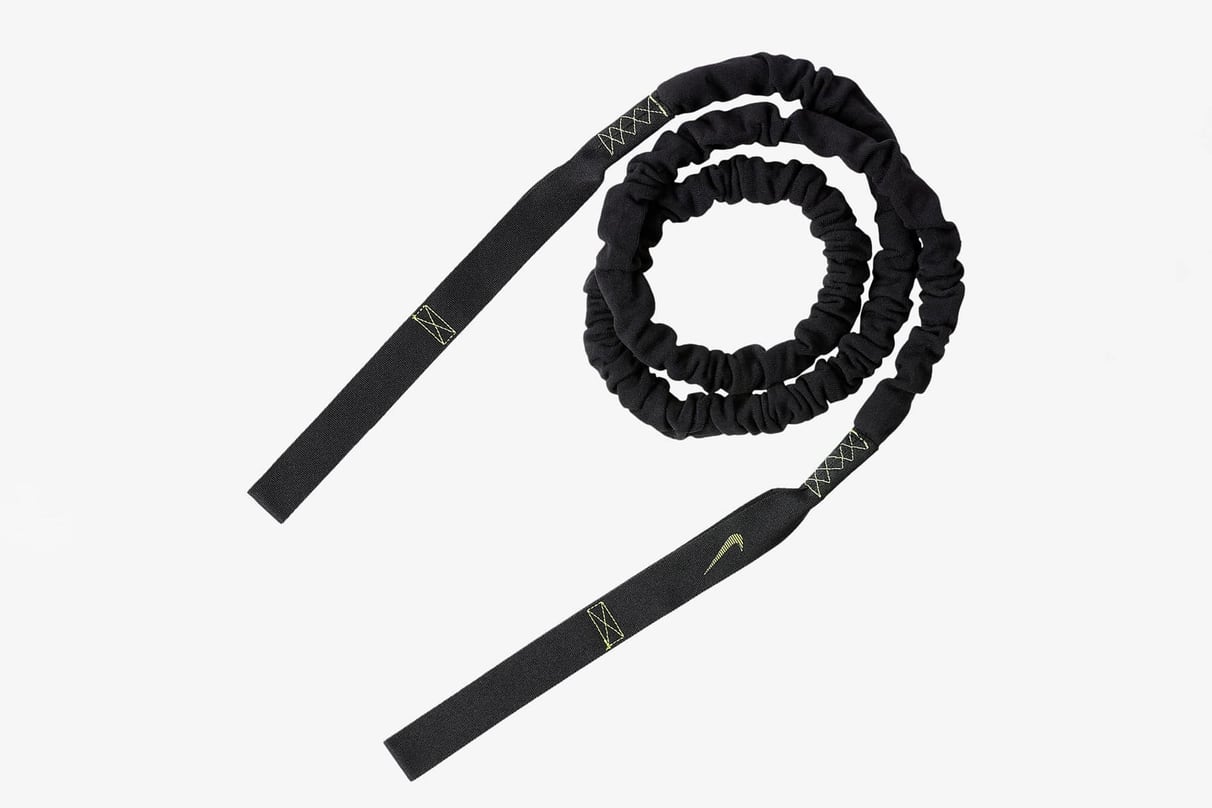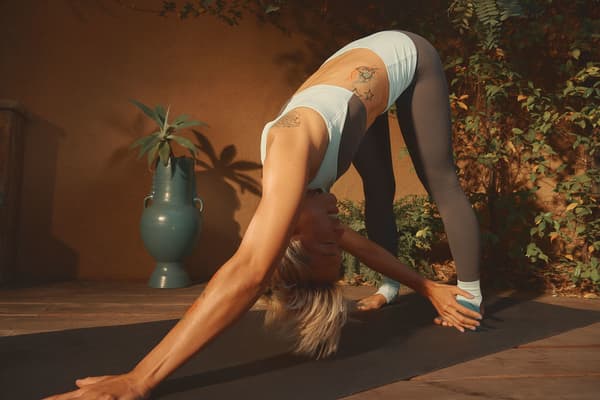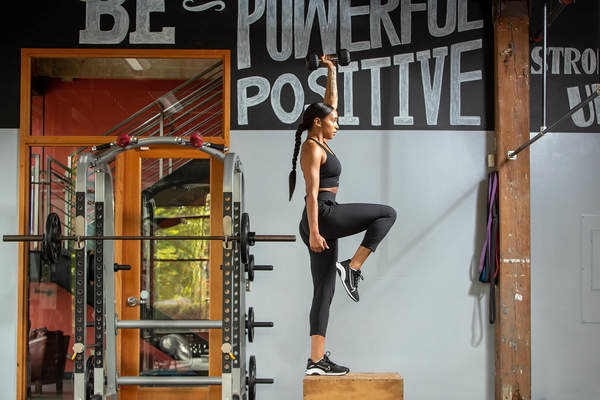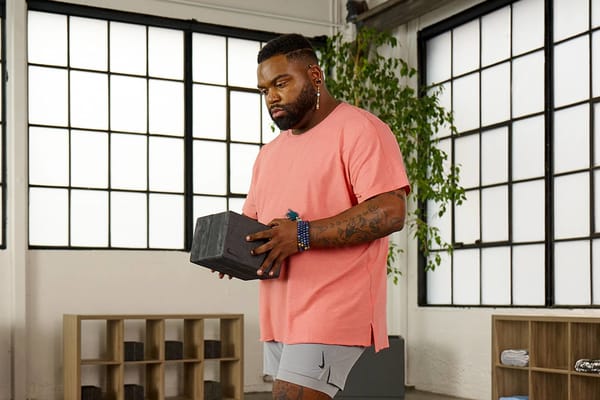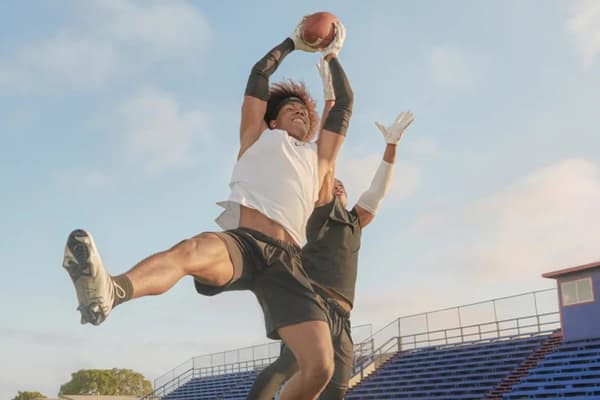The Best Nike Resistance Bands to Shop—and How to Use Them
Buying Guide
Skip the bulky workout equipment and challenge your muscles with Nike resistance bands.

An athlete should store at least one resistance band in their set of tools for strength training. That small rubber band can pack a bigger strength-training punch than its compact shape might suggest, explained Shaun Tubbs, NASM.-certified CPT. and lead instructor for CITYROW in New York City.
"Resistance bands have so many benefits when it comes to strength training", he said. "[They] are a valuable strength tool for any exerciser, beginner or advanced, because they can be used in so many different ways".
The best resistance bands are also lightweight, portable and relatively low-cost, at least in comparison to other types of strength-training equipment, Tubbs added.
Saving space and money is only the start. Here are the best resistance bands from Nike, plus some of the top exercise-related benefits associated with incorporating resistance bands into a fitness routine.
4 Nike Resistance Bands to Shop—and How to Use Them
Tubbs noted that it will depend on a number of factors to determine the type of resistance band you need. For example, you should take into consideration your level of comfort with an exercise you hope to use the band for, how you intend to use it (either to assist a movement or provide the main point of resistance) and how hard you want the exercise to feel.
(Related: The Best Resistance Band Exercises for Beginners)
That said, some resistance bands are better geared to target certain muscles or to be used with different exercises than others. Here's a breakdown of the four main Nike resistance bands and what to use them for:
1. Nike Light Resistance Band With Handles
Best for: according to Tubbs, light resistance bands are ideal for muscles that you wouldn't typically load with substantial weight (think: core) or when the exercise calls for the band to extend particularly far (such as standing on a resistance band for an Overhead Press).
Tubbs added that if you're ever unsure what type of resistance band to choose for an exercise, reach for a light one or check with a certified personal trainer.
"With new exercises, start with a lighter resistance band or no resistance band at all", he said. "You want to make sure you can do the movement properly without adding too much weight or tension". The Nike Light Resistance Band provides 9.07 kilograms of resistance.
Exercises to try:
- Overhead Shoulder Presses (standing in middle of band)
- Russian Twists (band wrapped around bottom of the feet in a seated position)
- Wood Choppers (band tied to fixed point on the ground)
2. Nike Medium Resistance Band With Handles
Best for: Tubbs said that this band, which provides 13.61 kilograms of resistance, is ideal for isolation exercises. According to the American College of Sports Medicine, an isolation exercise primarily works one muscle at a time, like Bicep Curls. A compound exercise, like a Squat, works multiple muscles at once.
Exercises to try:
- Biceps curls (standing in middle of band)
- Triceps Extensions (standing in middle of band)
- Hamstring Curls (band anchored to fixed point)
3. Nike Heavy Resistance Band With Handles
Best for: providing up to 18.14 kilograms of resistance, the heavy Nike resistance band is ideal for larger muscle groups (like the hamstrings, glutes, quads, back and chest) and compound movements that can handle larger loads in exercises, Tubbs explained.
Exercises to try:
- Squats (standing in middle of band)
- Deadlifts (standing in middle of band)
- Chest Presses (band anchored to bottom of bench)
(Related: What's the Difference Between a Squat and Deadlift—And Which Is Better?)
4. Mini Loop Resistance Band
Best for: If you're a beginner (or coming back to exercise after a break), adding a mini loop resistance band can provide extra resistance and help you get familiar with adding an accessory to a move, while also emphasising appropriate technique.
Tubbs said mini loop resistance bands can also help you stay within the intended plane of movement for an exercise. For example, in a Glute Bridge, a mini band stationed above the knees activates key stabiliser muscles, which can foster proper hip-knee-ankle alignment, said Tubbs.
Exercises to try:
- Glute Bridges (band wrapped around thighs)
- Squats (band wrapped around thighs)
- Clamshells (band wrapped above knees)
3 Benefits of Using Resistance Bands
1.Resistance Bands Provide Similar Results as Other Types of Strength Equipment
A 2019 meta-analysis published in SAGE Open Medicine found that the type of strength gains possible with a resistance band is comparable to other types of strength-specific gym tools, like dumbbells, kettlebells and barbells. And those findings applied to people of all physical abilities and ages, from elite-level athletes to sedentary adults (meaning they don't regularly exercise).
2.Muscles Work Overtime in Certain Resistance-Band Movements
Resistance bands provide increased time under tension (TUT), which is the amount of time a muscle receives activation (or is "being worked") during an exercise. This essentially means your muscles are working hard for longer, Tubbs said.
With mini loop resistance bands, increased TUT comes into play big time, since your muscles continuously work for the full duration of the move, he added. For example, even for the "resting" portion of the movement (like standing up from a Squat), your muscles are still pushing the band outwards.
"With resistance bands, [you] get greater muscle activation because there's resistance applied in both the concentric and eccentric phases of an exercise", Tubbs explained. (FYI: Increased TUT training has been linked to greater hypertrophy, or increased muscle mass, from strength training.)
Consider a Bicep Curl, for example. With a pair of dumbbells, the biceps (the primary muscle being worked) receive the most activation during the curling (concentric) phase of the movement. With a resistance band, the biceps receive activation during both the upwards curl and as the weight is lowered (the eccentric phase).
And while that extra focus on the eccentric part of an exercise can yield some considerable gains in strength, power and speed, eccentric-focused movement has also been found to improve a person's balance, flexibility and mobility, particularly in older adults. (It's important to note, however, that this study provided an overarching assessment of eccentric movement and wasn't necessarily specific to resistance-band training.)
Plus, Tubbs said that added tension helps keep you from using momentum, or swinging, to lift the weight, rather than the muscle itself. (In other words, no cheating!)
3.Resistance Bands Can Double as a Mobility Tool
Resistance bands aren't just designed to activate your muscles in strength exercises—they can help build flexibility and balance, too.
In a 2017 meta-analysis of 19 resistance-band-focused studies, researchers found that using a resistance band could improve the flexibility and balance in people aged 65 and over.
Another 2019 study from the Journal of Sports and Science Medicine noted that rugby players improved their flexibility and range of motion after completing a five-week resistance-band-focused exercise routine.
Words by Julia Sullivan, ACE-certified CPT
